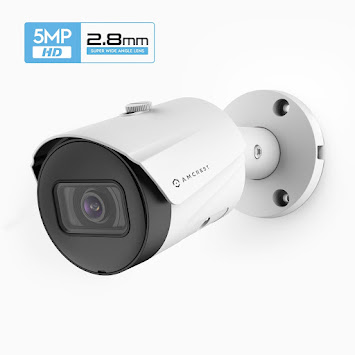Comparison Of Analog And IP Cameras
These comparisons will assist you in determining whether or not an IP camera security system is appropriate for your needs. In CCTV systems, an analogue camera is a camera that employs old technologies. It transmits video via cable to VCR and DVRs. All IP camera can transmit signals over the cable to be stored on the network. Today's security cameras are often hybrid systems that combine digital and analog components.
Video quality
Analog cameras are less dependable than IP cameras in general. They feature more video site options, such as a broader or smaller field of view and improved zoom-in capabilities. They transfer digital impulses and provide more information. As a result, they're better at recognizing faces and identifying license plate numbers.
Although analog cameras are generally less quality than IP cameras in general, they perform better under low light conditions. Analog cameras are less versatile and can't zoom in as well as IP cameras. Analog images will look grainier and less sharp if you zoom in. This is not the same as what you see on television cop shows. Zooming in on an analog camera will not help you recognize the faces of perpetrators.

Resolution
Digital cameras generally have resolutions six to twenty times greater than analog cameras.Analog cameras can only be used at resolutions that are NTSC/PAL 720 x 480 pixels (NTSC),/575 (PAL), or 0.4 megapixels (4CIF). The range of analog camera resolutions is from 420 to 700, which can produce sharp images at the highest end.
The resolutions of IP cameras can be as high as 5 megapixels (2560x 1920 pixels) and include compressed encoded transmissions. This allows you to see a wider area and take more detailed photos in smaller, zoomed-in areas.
Transmission media
Analog cameras are wired over coax cable. However, they can also be used with wireless connections or twisted-pair cables, although this produces less resolution.IP cameras can also be used with coax cable and twisted-pair connections.
POE (Power over Internet) capabilities
IP cameras have the advantage of being powered by twisted-pair Ethernet cables, eliminating the need to run wires.Poe cannot be used with analog cameras older than 10 years.
Wireless
In areas where it is too expensive or difficult to run cable, wireless IP camera network connections are a practical option. Wireless can be used in buildings that are difficult or impossible to run cable.
Distance
Analog cameras can transmit video via coax cable and twisted-pair cable to distances of up to 1.5 km. Analog transmissions can lose clarity as to the distance increases and the signal is converted to another format.
IP cameras can transmit digital video up to 100m over twisted-pair Ethernet cables and unlimited distances via IP networks. The images can be sent digitally, so they retain 100% of their clarity even over long distances.

Intelligence and management
IP cameras provide remote management and network intelligence. They can simultaneously stream images and parts of images to multiple recipients. Additional tasks include sending messages to recipients when they sense motion.
Installation is easy
Analog cameras require more cabling than IP cameras. They require separate cables to control the pan, tilt, zoom, and other functions. A second cable is needed if audio is being used. Three cables may be required for one analog camera: power, audio, and video.
IP cameras can receive power, video, audio, and PTZ control signals via a single cable.
Security
Analog cameras are more susceptible to security breaches because feeds can physically be intercepted, and tapes or recording devices can be taken. Analog video feeds cannot be encrypted.
It is difficult to intercept data using IP cameras. They can encrypt and compress data before sending it over the Internet.
Reliability
Analog security cameras have been around for more than 50 years and are known for their reliability.
Because of data encryption and compression, IP systems are built-in reliability. Although they are as reliable and secure as the network, backup systems can be implemented to minimize outages.
Expand ability
Because IP cameras require less cabling, they offer greater expand ability and scalability. It is possible to use your existing cabling infrastructure to migrate to IP cameras by using converters and extenders.
Prices
Although IP cameras are more expensive than analog cameras due to the higher cost of the cameras, the price of IP cameras has been dropping steadily. However, the overall cost of an IP camera system may be lower than expected due to lower labor costs, recording equipment, and cabling.
You can reduce costs by connecting IP cameras to the existing cabling infrastructure using extenders or media converters.




Comments
Post a Comment